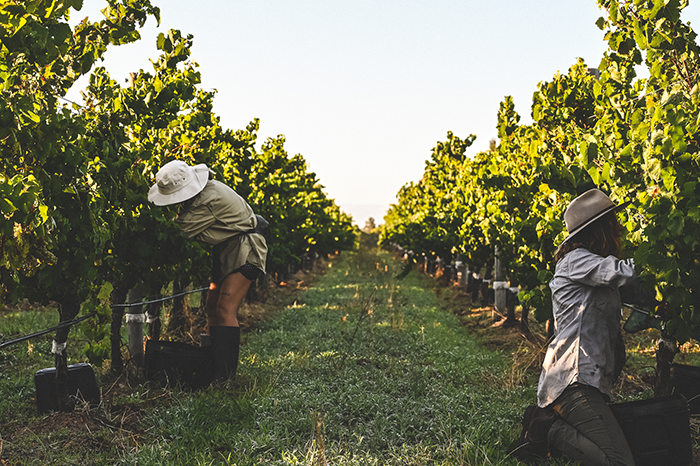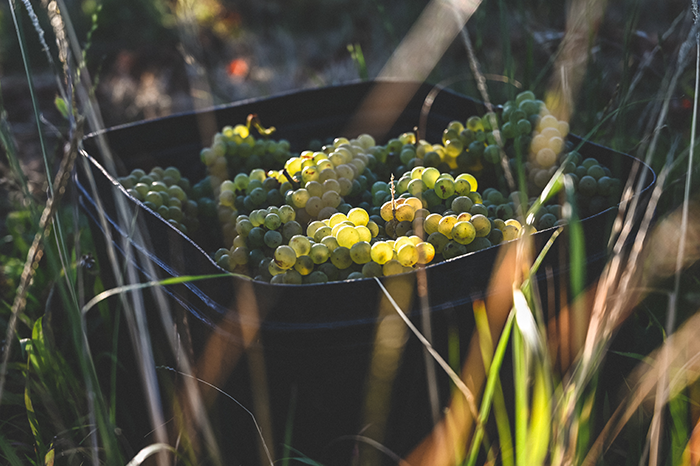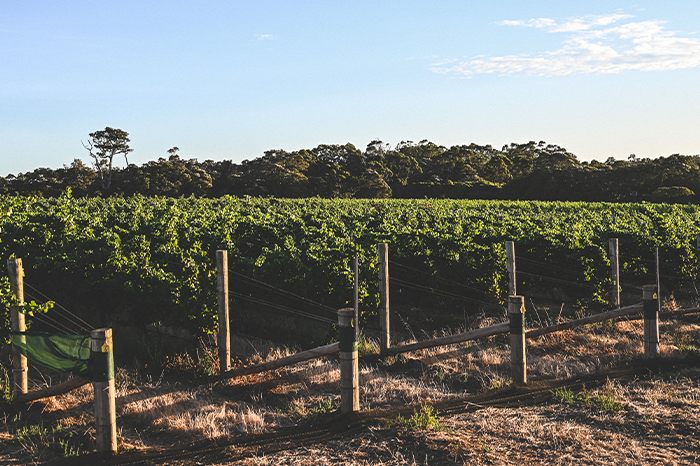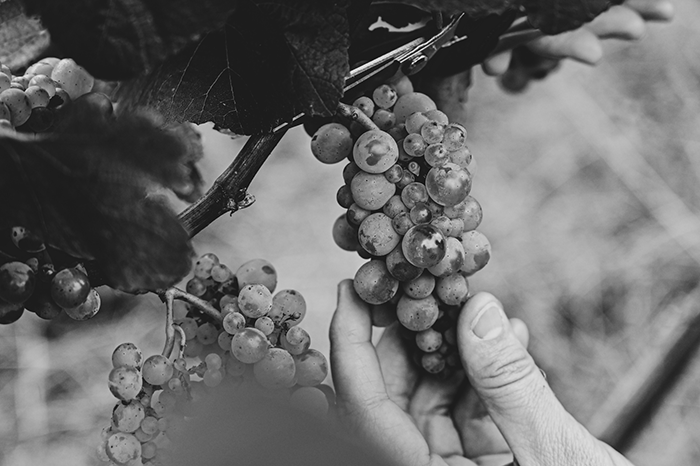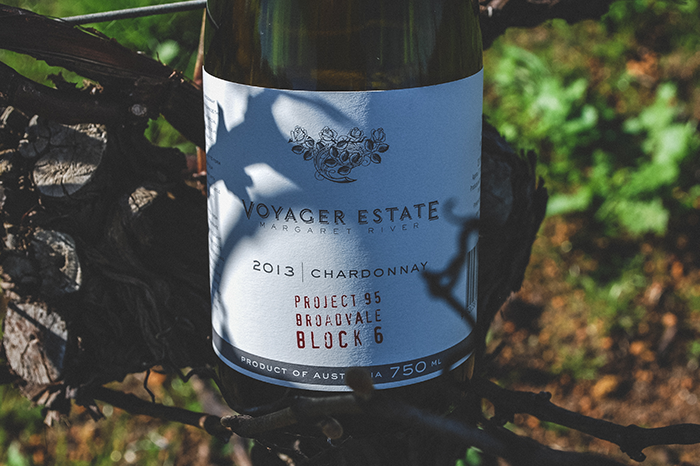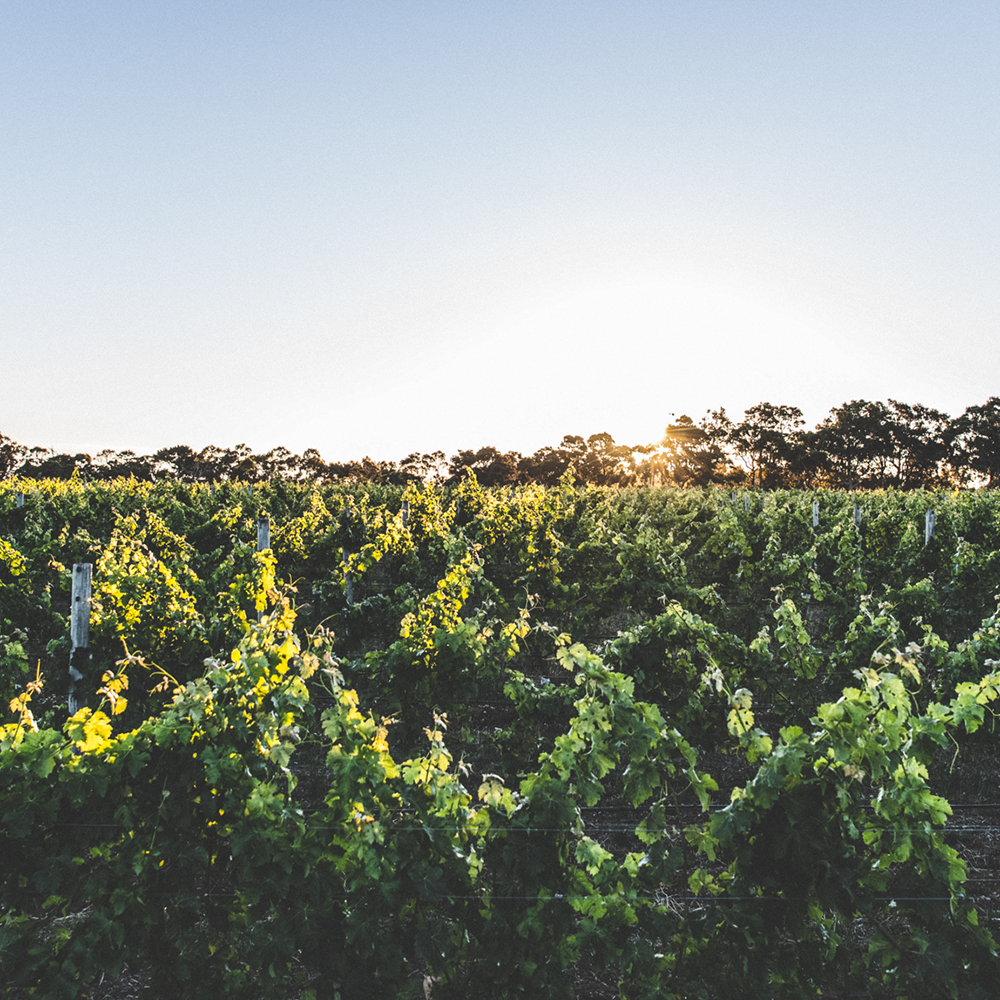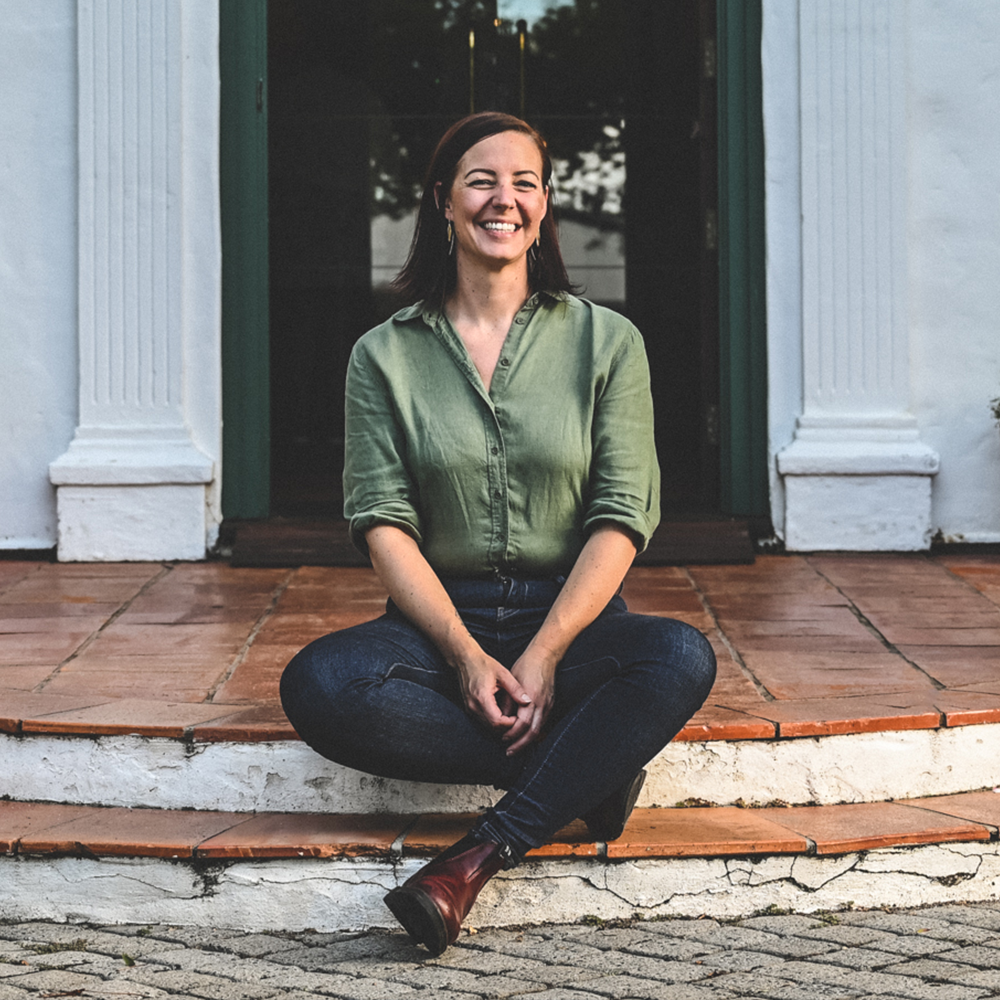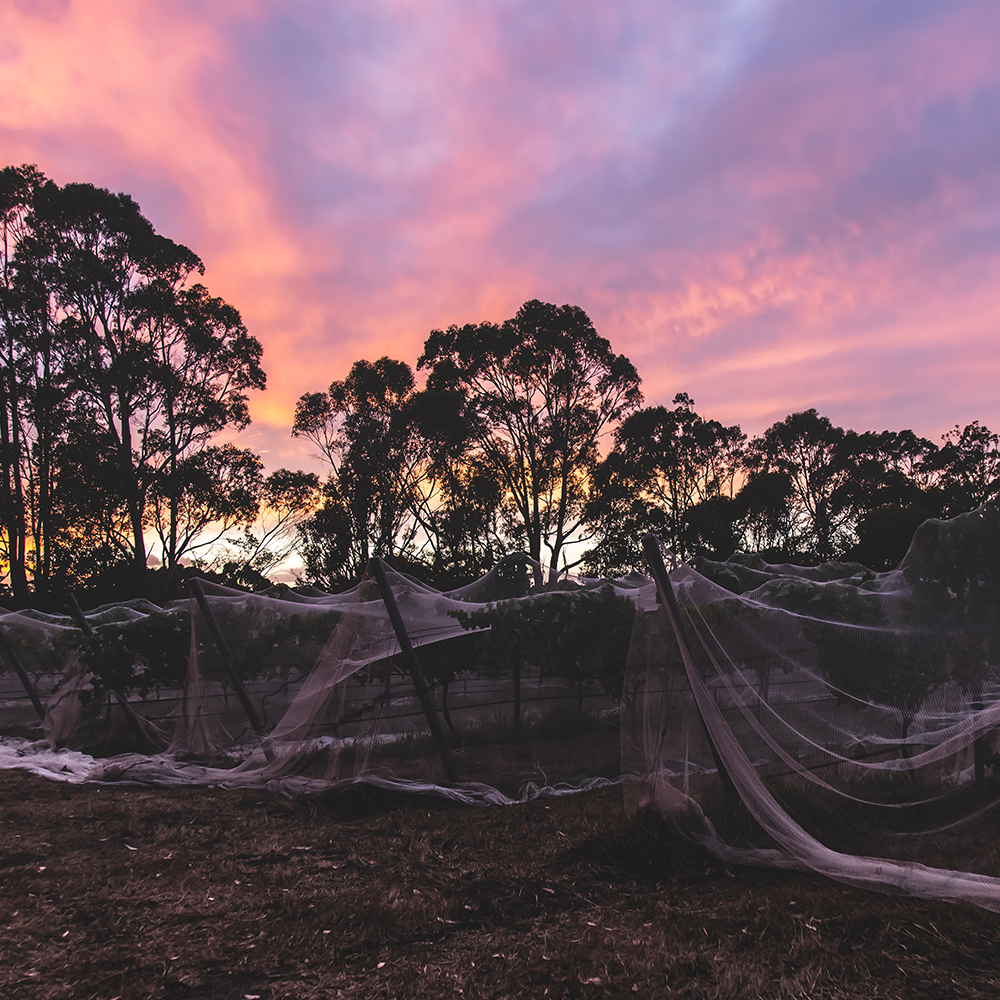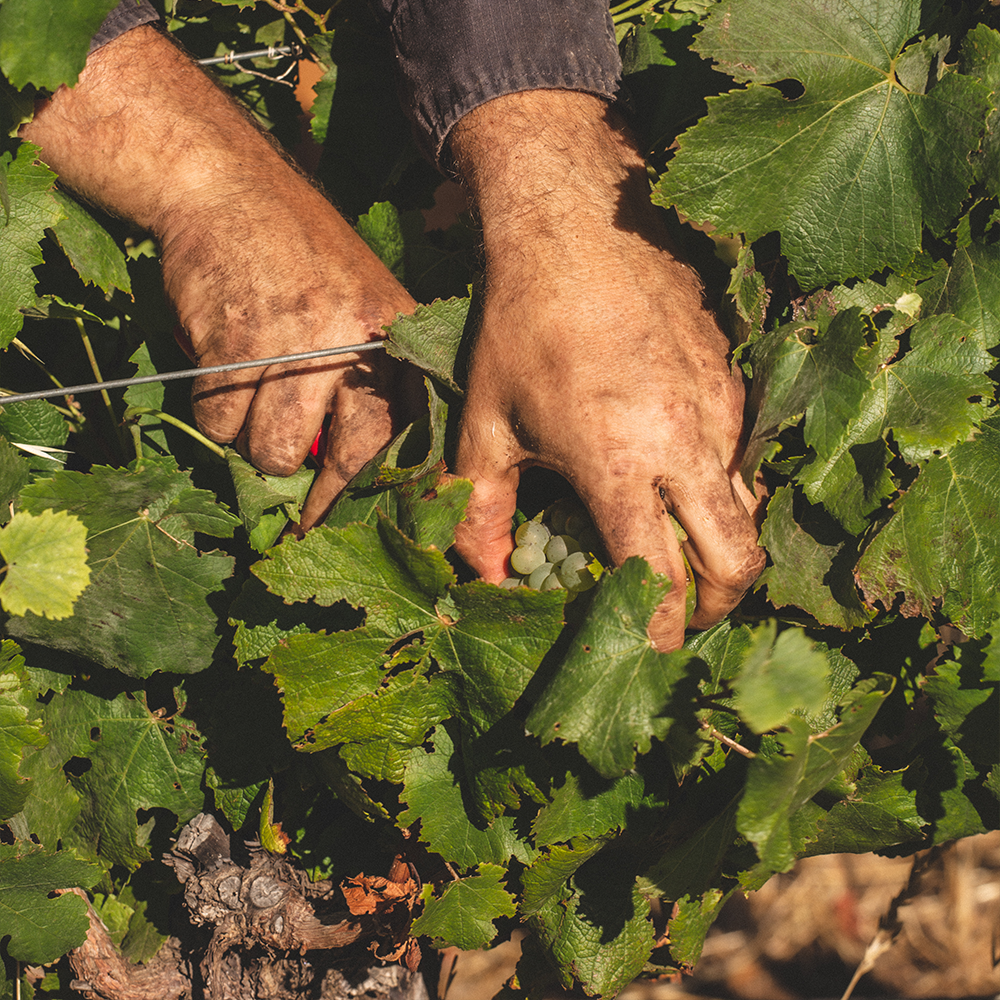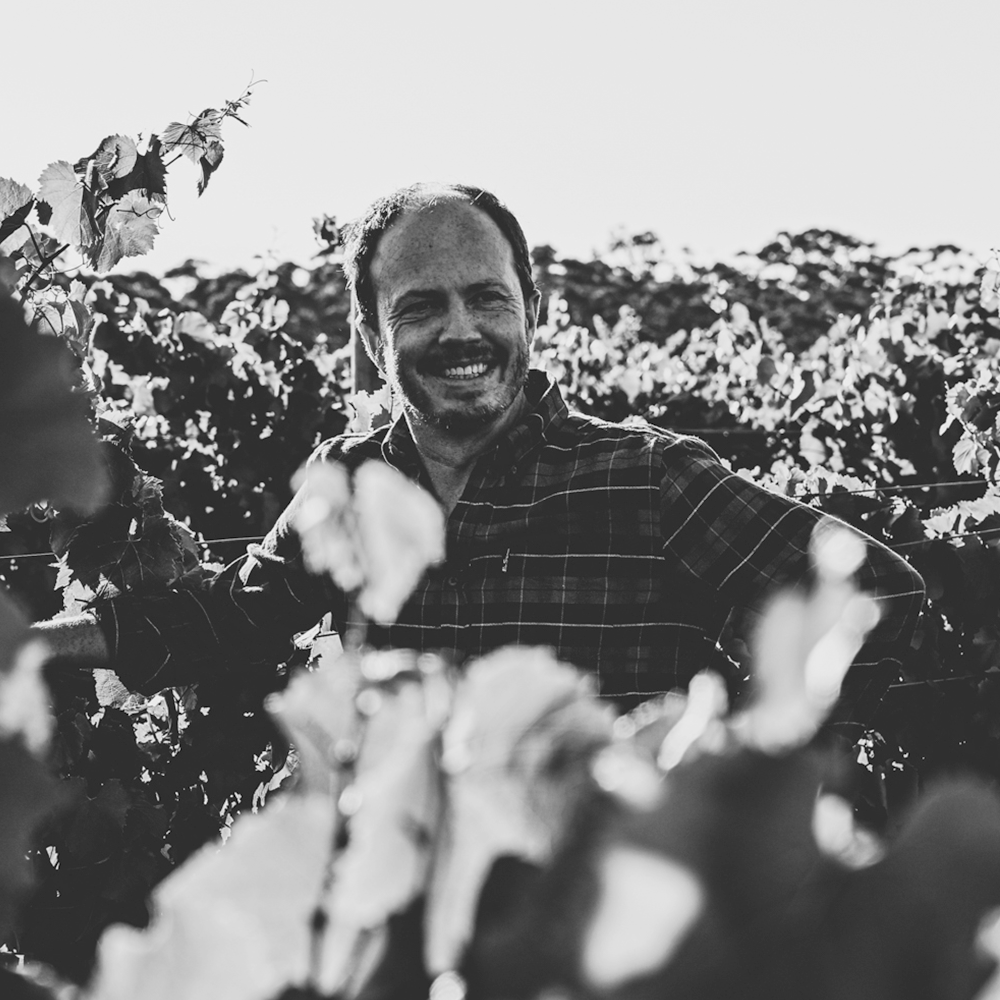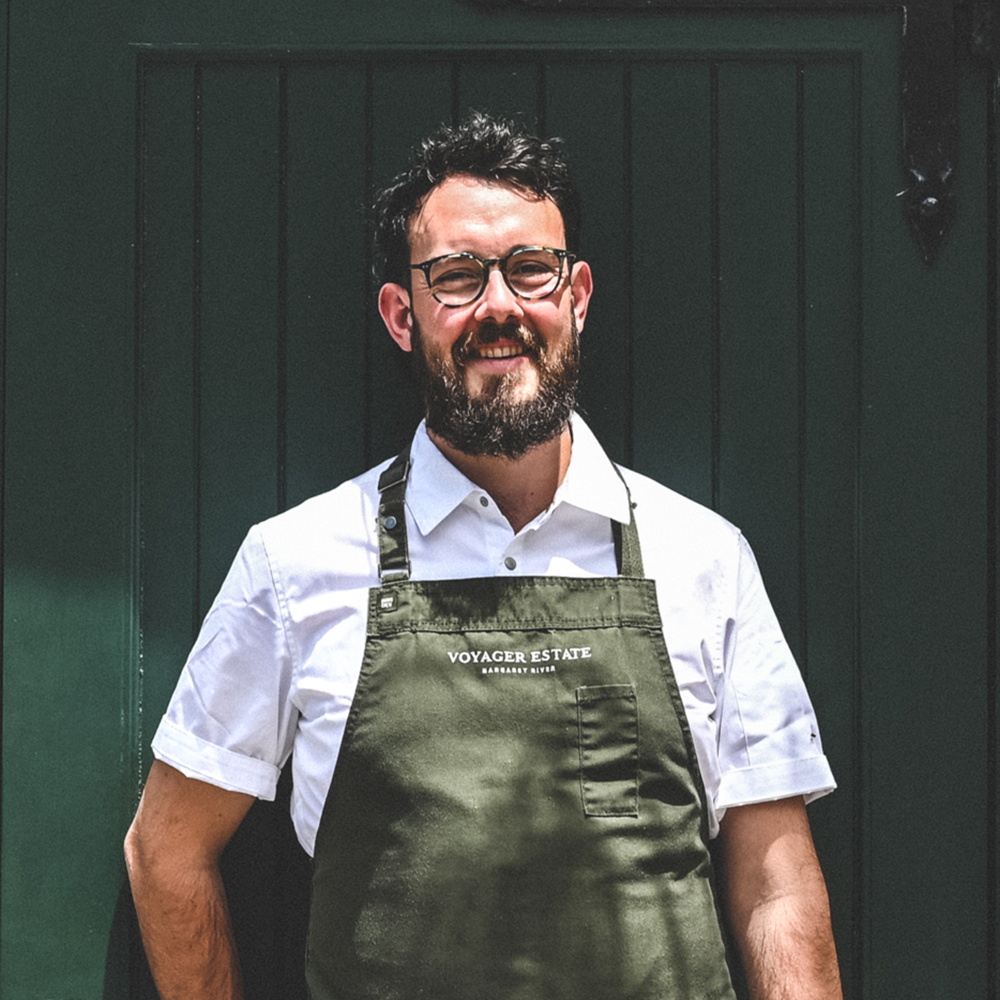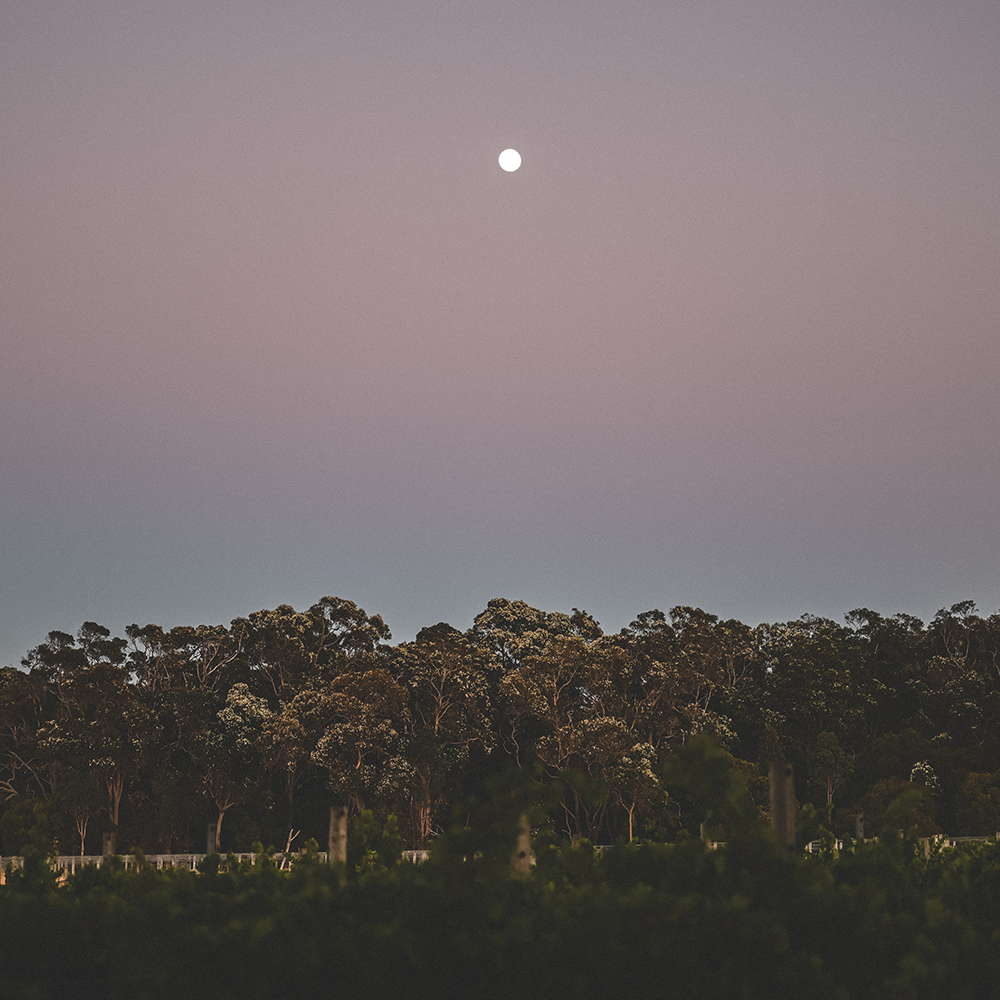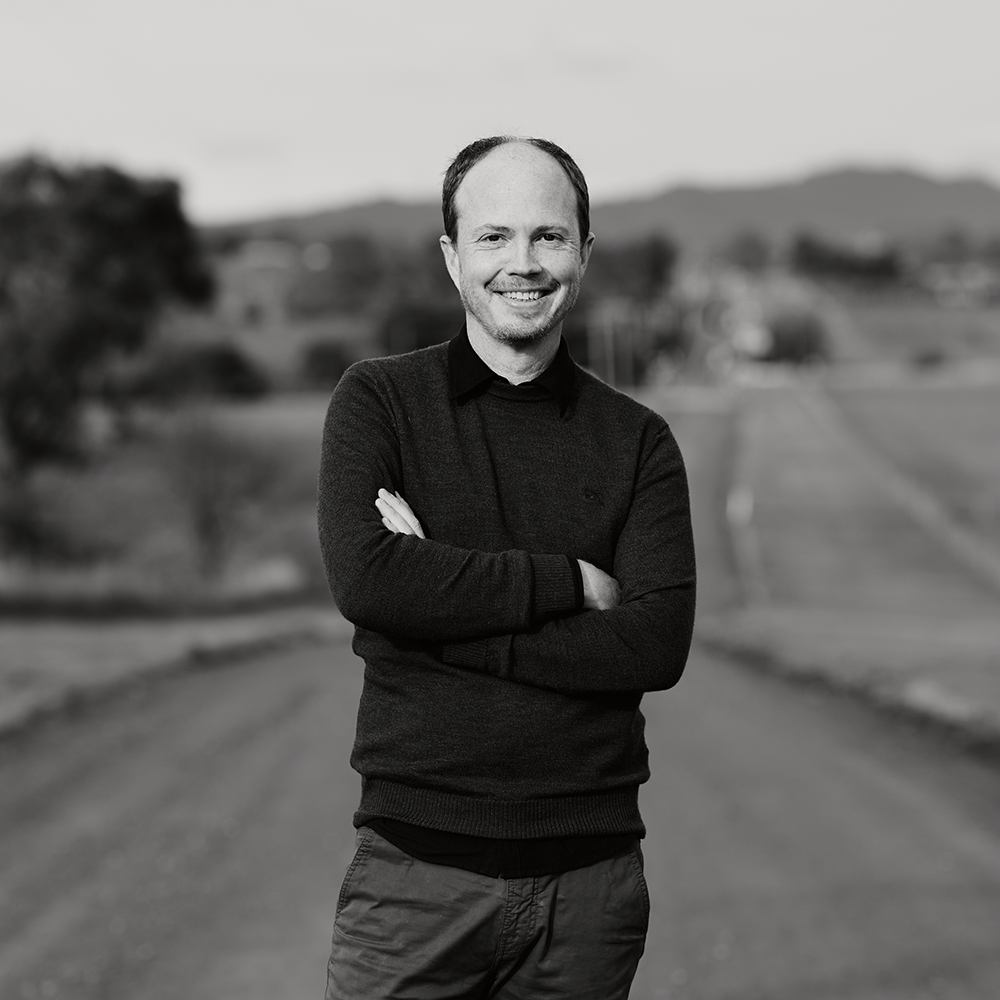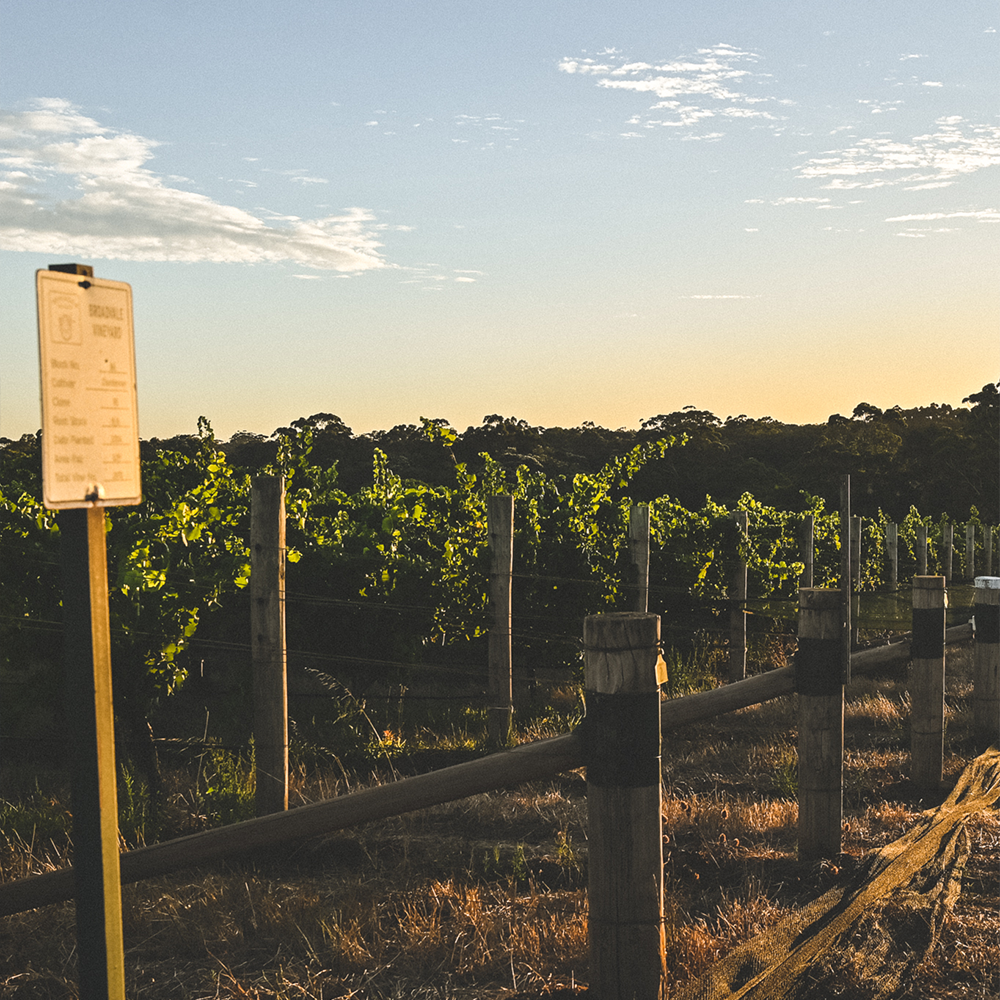Blog
SILVER STATUS
In exciting news we’re proud to share that we’ve achieved Silver Membership status with International Wineries for Climate Action.
IWCA said of our achievement: “Voyager Estate has made sustainability a core mission for decades. The winery’s achievement of IWCA silver level is a reflection of their dedicated efforts to measure and reduce their emissions and champion climate action in the industry.”
IWCA is a collaborative working group of wineries committed to reducing carbon emissions across the global wine industry. Members at the Silver level commit to becoming net zero by 2050 across Scopes 1-3 and have completed a minimum baseline third-party-verified greenhouse gas emissions inventory.
For more information, visit the IWCA website.
CELEBRATING WOMEN IN WINE
On International Women’s Day, we are celebrating all the women we’re fortunate enough to call colleagues, customers, and friends.
A special salute to the exceptional women at Voyager Estate, who are dedicated to creating one-of-a-kind wine experiences for our guests each and every day – including our passionate Restaurant Manager Angie Evans.
What does International Women's Day mean to you?
Although I hope that some day in the not too distant future we will collectively reach a point where we no longer need an International Women’s Day, I think that right now, it's a great way to celebrate the huge progress we have made towards equality for the genders. It’s also an opportunity to think about and plan further movement in this direction.
Tell us about your journey in hospitality – how did your career unfold and what do you love most about it?
After my secondary education, as a green 19-year old, I got a job at a grand café in the centre of Rotterdam in the Netherlands. It was here my passion for hospitality ignited. It was also my first introduction to wine! The first wine I got really excited about was the Saint Clair Sauvignon Blanc from Marlborough. My career at Voyager started quite suddenly after a lunch experience I had here with my husband. Everyone was so passionate in their service delivery, the food and wine were so excellent and the level of care was so high that I wanted to be a part of that!
What I love about hospitality is that I get to facilitate the making of memories. I LOVE going out for a great meal! Not just because of the wine and food, but the whole experience. I want our guests to feel special because of all the things we do that aren’t expected. That’s what an excellent hospitality experience is for me.
What fascinates you most about the world of food and wine?
The endless possibilities! I love food with lots of flavour and different textures. I sometimes wake up with the idea of a drink or dish in my head. Could be something I’ve had before or something I would like to try. Yesterday I woke up thinking about the sigara böregi that I used to get from the Turkish restaurant around the corner from my house in The Hague. I find wine fascinating because it can convey information about a place and time. It never tastes the same! It ages and changes and the way it tastes also depends on how you feel, where you are, what you've eaten...
What contribution during your time at Voyager are you most proud of?
This must be building our passionate front of house team. Each of them contributes something really important. There is open communication between us and we all strive to do things better. We help one another to learn and grow and we always celebrate our wins together. I am also quite proud of the non-alcoholic beverage offering I have developed for our menu. This offers an important alternative to those guests that don’t drink or can’t drink right now.
What challenges, if any, do you see for women in the hospitality business?
Drawing from personal experience, I think the single biggest challenge women face is a lack of confidence. Even when we are hugely capable, conscientious and visionary, we seem to doubt ourselves! Taking the lead can sometimes seem challenging and less inherent. The key to overcome this? Stop comparing and start celebrating your wins and those of others. Elevate the people around you and you elevate yourself.
Which women inspire you most?
All the women in my life inspire me! I realised about ten years ago that surrounding myself with inspiring people is so enriching. No one person offers the same thing, but that’s the beauty of it! My friends and colleagues inspire me to be confident, to love unconditionally, to achieve, to investigate, to have fun, to grow spiritually and to look after ourselves and one another.
What would you say is the most important attribute for a successful career in hospitality?
Passion. I think you have to really love this industry and be energised by it. When you strive toward delivering something excellent, whether an experience, a dish or a wine list, you keep learning, developing and moving things forward.
What is the best piece of advice you've ever received?
"If you don’t like it, you can just go home.” This applied to travelling, but the gist can be applied to everything in life. If you want to do something, just start. You don’t always have to know exactly where you are going all the time. If you stay stationary and try to work out your entire plan, you might never actually go anywhere. Plus, I’m in no way a chess player, so I cannot calculate all possible outcomes! Also, most of the time, where we end up is a completely different place to where we planned to go. And that’s the beauty of it. If I hadn’t gone with the flow a decade ago, I would never have made it to Australia!
What advice would you offer to women who want to pursue a career in hospitality?
Be confident. If the passion is there, go after what you want. Create what you feel is missing or would like to see more of. Surround yourself with people that encourage you and help you on your journey. Be curious as well. Speak to people that are passionate about the same things and find out how they got to where they are. And don’t beat yourself up if you don’t get it right the first time. Learn from it and move on.
VINTAGE VIGNETTES: WEEK TWO
Welcome to the second in our series of snippets straight from Chief Winemaker Tim Shand, revealing all the magic and momentum of our first certified organic vintage...
"I'm pleased to report that all the Chardonnay is now in the house, and we can safely call this an excellent year for that variety!
In week two hand-picking continued, completing Blocks 5 and 6 and moving into Block 10 (all Gingin clone). We took a different approach this year, taking the luxury of two separate passes through the vineyard to pick the last of the Chardonnay. In the first pass, the pickers were instructed to pick only the bunches that were clearly visible (located on the outside of the canopy). The hypothesis being that with more sun on them, these bunches would be advanced in both sugar and flavour.
Three days later the pickers returned for the balance with the hope that a bit more time would see those bunches located within the canopy suitably advanced in ripening. Needless to say, it was a long three days of chasing birds around the (netless) block for Glen!
The two batches will always be distinctly different, but the hope is that both will be of better quality than the blended fruit would have been if all picked together.
We finished the week in Block 12 (all 76 clone), a low yielding block near the Cellar Door, which has found itself a small component of MJW in good years. With about an hour left in picking the heavens opened and gave us our first decent rain in four months. The rain hung around for the rest of the day and delivered 10mm in total. Nothing serious but it was a good feeling to have the Chardonnay all picked when it came down!
Whilst giving the whole vineyard a welcome freshen up, the rain does give us some anxiety around our Sauvignon Blanc, which will be next off the vine. We took a pause over the Labour Day long weekend (unheard of in the wine world!) and will hopefully get stuck into it again on Wednesday morning.
Chardonnay ferments have kicked off spontaneously in barrel and the winery is filled with estery stone fruit aromas - a great time to visit the winery on a tour as a few lucky guests discovered today!"

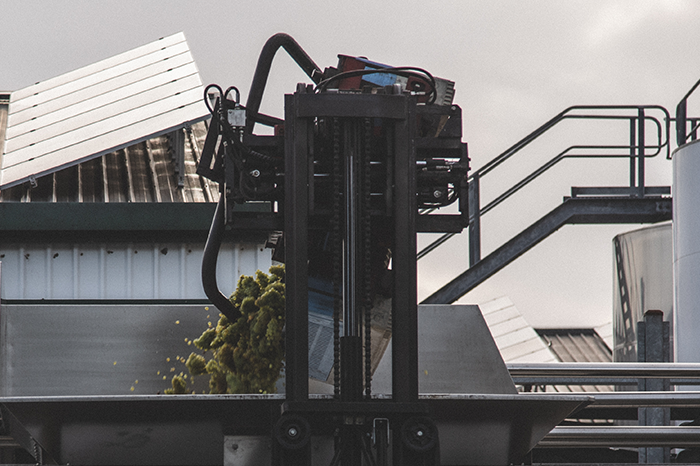
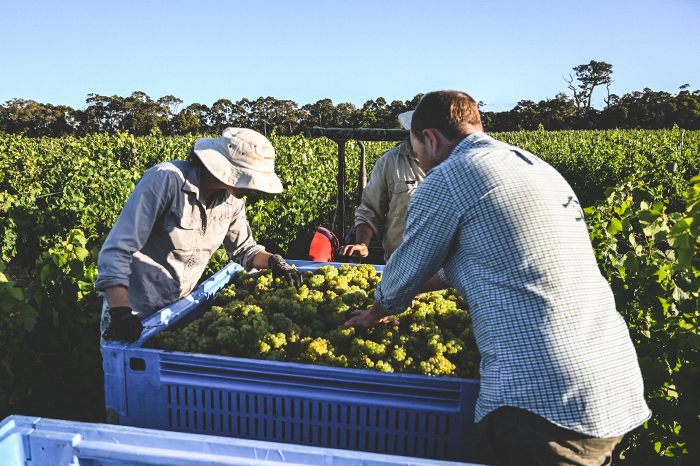

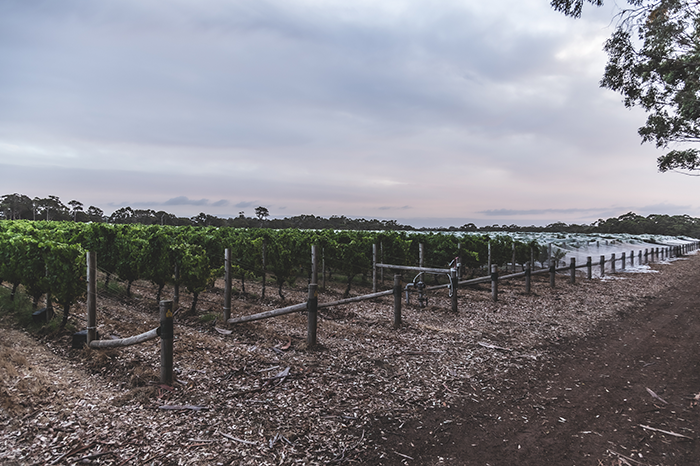
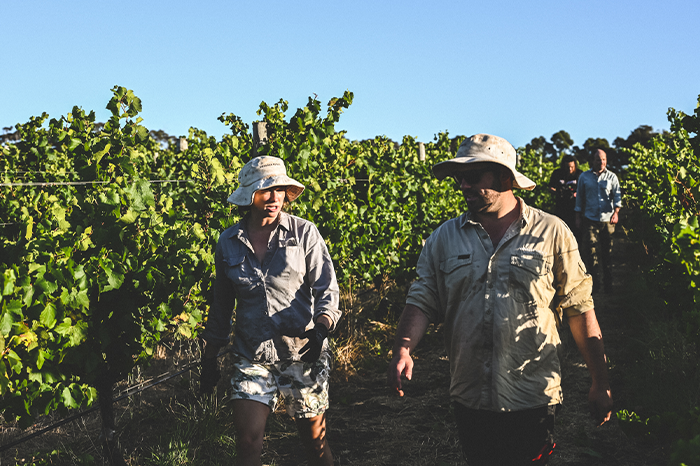
VINTAGE VIGNETTES: WEEK ONE
Welcome to the first in our series of snippets straight from Chief Winemaker Tim Shand, revealing all the magic and momentum of our first certified organic vintage...
"It was all smiles in the winery and vineyard as we finished up week one of Vintage 2023! The sunny, dry spell that commenced in November shows no sign of abating, and we’ll harvest all our Chardonnay fruit in perfect conditions.
Picking commenced on Wednesday in Broadvale Block 6 with our Clone 95 Chardonnay. A universal truth of white grapes is that your best vineyards ripen first and that was the case again this year. Flavour (lime, pear drop...) came at low baumés as well as a lovely acidity – a sure sign of a standout vintage.
On Thursday, we moved over to Broadvale Block 5 – the Gingin Clone. The first pick in this larger block is in the western end, which sees the most sun in the afternoon. The block copped an early weevil attack in spring, but quick work from Glen and the team saw a Lazarus-like recovery! Flavours here are more toward the lemon spectrum, with some fig notes in the more exposed bunches. Again, we couldn’t have dialled up the press analysis any better with tight but refreshing acidity in the juice, and a lovely green hue.
Warm days and cold nights continued into day three and four of harvest, appreciated by the Chardonnay vines and harvesting humans alike! Broadvale Block 12 Clone P58 (planted in 2016), which has traditionally gone into Coastal Chardonnay, showed glimpses throughout the growing season that it has come of age. The fruit is going into the press as we speak, and has a nice mix of barrels laid out for filling later in the day. Fingers-crossed it will make its debut in the Voyager Estate blend this year.
Looking forward, by mid-next week, we’ll have broken the back of the Chardonnay pick and will be tentatively looking at Sauvignon Blanc for a start date. With the ideal conditions we’ve had, reds will be knocking on the door as well. Birds remain a constant threat as the Marris have failed to blossom thus far, but with nets going out fast there’s no complaints and plenty of optimism here."

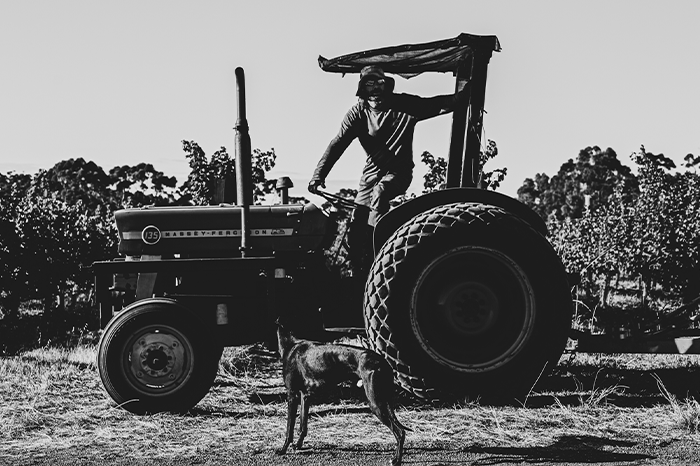

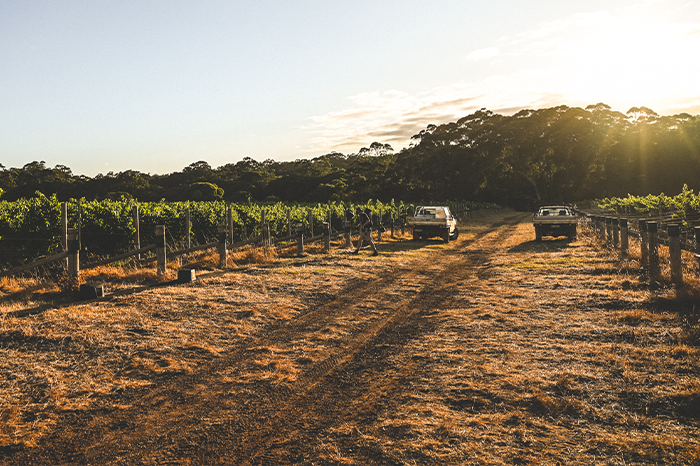
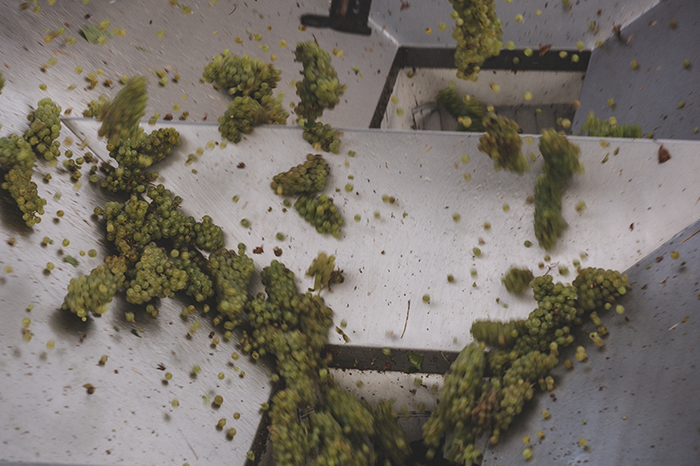

Q&A WITH TIM: PART TWO
Get to know our new Chief Winemaker in a two-part series of rapid fire questions, designed to delve a little deeper into Tim's background, passion and vision for Voyager Estate.
How does Cabernet from the Yarra Valley differ from Margaret River?
Cabernet from the Yarra Valley has fine and approachable tannins, even when young. The flavour profile is red fruits in cooler years, leaning toward blackcurrant and black olive in warmer years, and always with a light frame. By comparison, Margaret River Cabernet is intense and concentrated, with tannins to match. Finding the gentleness and harmony in all that strength will be a worthy task.
How does Chardonnay from the Yarra Valley differ from Margaret River?
Chardonnay from the Yarra Valley has a fine-boned structure and is reliant on the linearity of acid from the cooler climate. The flavours of Margaret River Chardonnay are more abundant, with the potential for great stature and longevity. Vive la difference, as they say!
Will your experience in the Yarra Valley inform your winemaking in Margaret River?
I am pondering that with the cooler sub-climate of Stevens Valley, there may be a little to be taken from both worlds to harness fruit power with a gentle line of savouriness.
The most incredible wine you've ever tasted?
The 1978 Domaine Dujac Clos de la Roche from Burgundy on my thirtieth birthday. The bottle was drawn from the iconic Dujac cellar – a typically generous act of the Seysses family. It completed the greatest day of my life. If my wife and kids are reading this…I’m sorry! I’ve had three children, but only one 1978 Grand Cru Burgundy!
Looking ahead, what are you most curious about?
The potential to push the envelope with avant-garde winemaking techniques applied to Voyager Estate’s high-calibre fruit.
How would you describe your winemaking philosophy?
I believe winemaking is more of a craft than an art, like jewellery or carpentry, because the beauty of the final product is limited to the quality of the raw materials. If there are artists at all in the wine, then the credit should go to the vines and the yeasts. The craft lies in respecting these core materials and understanding how to guide them on their way to bottle. If a winemaker ever tells you they’re an artist, then they’re a b******t artist!
INTRODUCING TRAVIS CRANE
We are thrilled to welcome Travis Crane, who has taken the helm as Head Chef at our celebrated signature restaurant.
With a career spanning kitchens across Australia and the world, Travis joins the Voyager team from his role as Executive Chef at remote luxury accommodation Finniss River Lodge in the Northern Territory and, before that, as Executive Chef of Brisbane's City Winery restaurants.
Travis will continue the established wine-led vision of the award-winning restaurant, with menus that capture an honest and memorable snapshot of the unique land and region, as well as highlighting Margaret River’s small-scale, ethical and sustainable producers. This approach aligns wholly with Travis's deep passion for provenance-focused cooking, ignited by his time at Belgium’s Michelin-starred restaurant In De Wulf and continued through his work at The Barrelroom and Larder at Ballandean Estate in Queensland.
“My philosophy is to source thoughtfully, cook respectfully, and present beautifully,” says Crane. “Joining Voyager Estate as Head Chef gives me the opportunity to create food that tells the story of our region and what we believe in, and present guests with a more sustainable way to eat. I am also excited to work with Sommelier Claire Tonon and the Voyager winemaking team to create dishes that showcase their stunning wines.”
Voyager Estate Proprietor Alexandra Burt is thrilled to welcome Travis to the team saying, “A compulsive forager, even on his days off, Travis’s considered and deeply creative style fits hand-in-glove with our wine-first approach to menu design, as well as being a great fit for our team. Travis picks up the baton to take the Voyager Estate restaurant to the next level, which is exciting for us and our guests alike.”
The Voyager Estate restaurant offers immersive, wine-led tasting menus. Changing with key seasonal milestones in the vineyard, our dishes showcase the freshest ingredients from favoured local farmers and producers, with chef and sommelier working closely together to create flavour pairings that provide a sense of place in Margaret River.
Our latest menu, BACCA [Latin: Berry], has been created by Travis in collaboration with Sommelier Claire Tonon and brings together the region’s finest sustainable produce for a colourful culinary evolution inspired by the grapes as they ripen through late summer. Highlights include Octopus, Rhubarb, Rose; Zucchini, Mussels, Citrus; Kangaroo, Mulberry, Macadamia, Saltbush; Pork, Beetroot, Black Garlic.
TALKING CLIMATE ACTION
Climate action, net zero, carbon positive… or is it carbon negative? It seems like there is a different variation everywhere we turn. Has it all been built up too much? Unfortunately, no. Climate change is happening faster than expected and climate action is needed, more than ever.
In our southwestern corner of Australia, we are grateful to live in a region with such healthy natural abundance. Still, the impact of extreme weather events like spring hailstorms, reduced winter rainfall, and intense summer heat spikes are a threat to our unique ecosystems.
Margaret River is a wine paradise, but these world-class wines are inextricably linked to climate. At Voyager Estate, we have long focused our attention on land restoration and catchment preservation. With every block transitioning to Certified Organic in 2023, the team’s environmental efforts have been led by land and vine health.
Late last year, we joined International Wineries for Climate Action (IWCA). In good company, we leapt into a new frontier of looking beyond our beautiful valley and outward to the impact our practices have on a regional and global scale.
IWCA was founded in February 2019 by Familia Torres and Jackson Family Wines, two leading families passionate about preserving the world’s great wine heritages in the face of climate change. IWCA is accelerating action on this significant threat to the wine community and finding shared approaches to common industry challenges. Voyager Estate was accepted as an Applicant Member in December 2021, with the support of Cullen Wines – the first Australian winery to join in 2019.
IWCA challenges us to meet some pretty ambitious targets, including net zero emissions by 2050, with an interim 2030 target of reducing our emissions by at least 35%. Reaching ‘net zero’ refers to achieving an overall balance between the greenhouse emissions we produce from our business activities, and those removed from the atmosphere.
So first things first, we need to greatly reduce the emissions we produce from our vineyard operations, winemaking, and from the packaging and distribution of our product. Then, we start looking at what we can do on the removal side. In our case, that’s a big focus on planting trees for biodiversity as well as carbon storage.
Voyager Estate has completed an initial emissions profile across a wide range of activities to understand where they are coming from within the business. Like many other vineyards and wineries, the big areas to focus on are electricity use, transportation of goods in and out, packaging, waste, and fuel.
We have already started on our reduction pathway through several recent initiatives, including installing a 30kW solar energy system in the vineyard. This will bring our total renewable energy capacity to about 25% of our current use. We’re also trialling a new six-bottle shipping box, which has cut the cardboard footprint of that box by half. The material is a recycled paper substrate with a 100% biodegradable paper pulp insert that holds the bottles in place during transport. The design is self-folding and self-closing without relying on glue or tape. If the trial is a success, we’ll also transition our three-bottle boxes to this new design.
Over the next few months, we will firm up some of the longer term actions and investments to take us to 2030. We’ll be looking into the state of electric vehicles and the different types of machinery that can be converted over the next five to ten years, as well as how we can radically reduce our waste-to-landfill. We’ll also continue to focus on soil health, which includes growing our resident family of ducks, who are doing an excellent job of controlling pests and putting life back into the ground. Our community giving program and the ongoing management of our biodiversity areas, as well as consistently looking for ways to reduce our impact as part of our standard day-to-day operations, will also play a big role in the way forward.
Some people might think that we are too small to make a difference. The ‘we’ might be individuals, the wine industry, and even Voyager Estate as just one small business. However, whether we are talking about a person, an organisation or even a town like Margaret River – when each of us acts, we become part of a greater whole that shifts what is viewed as ‘normal’. We increase the number of heads, hearts, and hands to test solutions towards not only a low emissions future but also a safe and healthy future.
Words by Voyager Estate Head of Sustainability Michelle McManus and Technical Viticulturist Alex Miller.
A TRUE ORIGINAL
Our Market Development Manager and resident wine writer Tom Kline unearths the story of MJW – one steeped in legacy, terroir and a trusty pair of well-worn boots.
Beauty and dirt exist dichotomously in mainstream culture; the narrative is that the former looks down its nose at the latter with enmity and disgust. It’s an early and unavoidable indoctrination, engendered by fussing parents and ubiquitous advertising painting dirt as demonic and, well, dirty. And yet, as children, we’re endlessly drawn to it, allured to its potential for learning and making.
By all accounts, Michael Wright wasn’t one to conform to mainstream thinking, and when he looked down at the dirt surrounding his boot-clad feet in the pristine and undulating Stevens Valley, he saw eminent beauty and visceral promise.
Much has changed since those boots hit the ground in 1991, chief among them the replacement of herbicides, pesticides, and fungicides with blood, sweat and tears, ensuring a vineyard rich in living, organically-tended soil. It’s the purest expression of these soils and the Stevens Valley terroir that Voyager Estate strives to capture in a bottle. And at the very apex of that expression sit the MJW wines, Chardonnay and Cabernet Sauvignon, meriting the inscription of the founder’s initials. A homage to his vision.
Naturally, it was more than just the soil that caught Michael’s eye. A staunch advocate for data gathering and statistical analysis, he’d done his research and taken his myriad of notes and observations, fastidiously indexed and legible only to him and perhaps his tenacious assistant. Among the simplest observations was the repute of neighbouring producers, the potential for growth, and the idyllic location in which this dirt resided. He also wasn’t acting alone.
“I had to go under the fence to get the first soil samples before we owned the vineyard,” says Alexandra Burt, when recounting the early days with her father. “He said, ‘You’re smaller, you go get it’, and sent me trespassing with a jar,” she laughs. Statute of limitations aside, clandestine visits like these spoke to Michael’s broad curiosity, his unquenchable thirst for knowledge, and his abundant joy in its subsequent application.
Today, the MJW range is emblematic of these traits, of Michael’s quest for excellence. The range has seen vast evolution since its inception in 1992, the first vintage under Michael's stewardship. As was common to the time, ‘Reserve’ was its first moniker, before a change with the 1995 vintage to ‘Tom Price’ in honour of a man Michael very much admired. Not one for self-aggrandisement, Michael would never have allowed a label bearing his initials. However, some honours are too felicitous to ignore, and, two years after his passing, the 2014 flagship wines were labelled ‘MJW’. “I just asked for his forgiveness quietly on the side,” recalls Alexandra. “Even if he had disagreed, I would have gone into bat for it incredibly hard.”
It’s not just the name that has evolved, however. The wines themselves have morphed over time, not only aligning with the increased understanding of the vineyard, but also with the maturation of the range’s identity. “In the beginning, we felt that the wines needed more power to stand out above the rest of the range,” says Winemaker and Winery Manager Travis Lemm. “The first couple of vintages were richer and more opulent within the context of our style. The wines have since evolved dramatically, and now it’s about absolute purity, detail, structure, and finesse.”
2018 will go down in Margaret River’s history as one of the greatest Cabernet Sauvignon vintages on record, and with the 2018 MJW Cabernet Sauvignon recently hitting the shelves, the team at Voyager is buzzing with excitement. “2018 was so even and consistent across the blocks,” says Travis. “It was the perfect summer. We had amazing ripening conditions; it wasn’t too hot which suited Cabernet as it doesn’t mind some extra hang time. We also didn’t have any major rain events, and yields were moderate.”
The fruit for the 2018 MJW Cabernet Sauvignon came from two blocks. Old Block V9 is a legacy vineyard that was planted in 1978. Rooted in orange clay with heavy dark soil, it puts forward pretty, floral, and delicate Cabernet that expresses red fruit and violet notes. North Block U12 sits on a gravelly hill with a rocky ridge through its centre, allowing it to be more free draining. Its gravelly loam soils produce fruit in a more muscular spectrum, resulting in savoury characteristics such as dried herbs, briar, anise, chocolate, and blue fruits. The blend of these two sites has resulted in a wine of power and finesse, presence and grace.
The 2020 MJW Chardonnay was comprised of fruit from three blocks. Broadvale Block 6 is Voyager’s smallest vineyard at one hectare but holds immense importance in the Chardonnay program. Perched atop a gravelly hill, it slopes gently towards the east, capturing the morning sun with protection from westerly winds. The vines are rooted into granite and flinty chalky rocks, which contribute lean minerality and line.
The neighbouring Broadvale Block 5 has a large west-facing aspect exposed to the westerly winds and sunshine. Depending on the season, this vineyard can put forward wines of high acidity or intense fruit power. “We had pretty low yields on Chardonnay,” says Travis. “The 2020 vintage favoured the Block 5 site as the fruit had such great intensity.”
Voyager 12 sits on a sandier profile. It’s a low-yielding terraced vineyard that steps its way down into the Stevens Valley, receiving good air ventilation through the canopy, which helps to preserve acidity. The sum of these parts is a powerful Chardonnay with great fruit intensity and impact, supported by fine acidity and vineyard detail. Like so many visionaries, Michael Wright was enigmatic, engaging and highly singular. His prodigious imagination and irreverence towards conventional thinking forged the path that led to Voyager Estate.
Theodore Roosevelt once said, “Keep your eyes on the stars and your feet on the ground.” In true form, Michael kept his eyes on the ground and saw stars at his feet. “He didn’t see dirt as dirty,” recalls Alexandra. “He saw dirt as something functional and useful and something that you work with to create beautiful things.”
Beauty and dirt exist harmoniously at Voyager Estate, and they’re captured best in a bottle of MJW.
Q&A WITH TIM: PART ONE
Get to know our new Chief Winemaker in a two-part series of rapid fire questions, designed to delve a little deeper into Tim's background, passion and vision for Voyager Estate.
Complete the sentence. When you first laid eyes on our cellar door...
I had a lot more hair! It was 2004 and I was in my last year at Curtin University’s Margaret River campus. At the time I was impressed by Michael Wright’s clear ambition for the Estate. My (now) wife and I had one of our best Western Australian dining experiences in the restaurant. Would have been baked beans for a week after that.
What excites you most about joining Voyager as our Chief Winemaker?
I am excited to make wines grown from this ancient spot in Stevens Valley, from old vines managed by Glen Ryan, with decades of accumulated wisdom and the long-term commitment of Alexandra Burt and her family.
What makes the Stevens Valley so special?
Of all the wine-growing areas in Australia, there are just a handful of very special places that make wines that are not only distinctive but also world-class. The Stevens Valley is one such place, with all the known attributes of the wider Margaret River region but through a cooler and more detailed lens.
How do you like to begin the day?
My favourite way to begin the day is to be woken up on the wrong side of 6 am by my three children and our dog clambering over me until I have no choice but to get up and make them breakfast.
When you craft wine, what are you aiming to express?
The important role of patience and attention to detail, as well as the significance of beauty in human existence, even in very small doses.
What inspires you?
I am inspired by the people who drink the wines we make. None of this happens without them! It is a privilege when someone is willing to part with their hard-earned to ponder, appreciate and savour the nuances that go into wine.
The proudest moment in your career to date?
In 2015 at Punt Road, when I took my first wines all the way from grape to bottle. Having worked under some remarkable winemakers for over a decade, I led the winery team and made all the independent decisions on harvest, wine style and maturation. I got lucky with the year; 2015 may be the greatest Yarra vintage of all time! We won the trophy for best Shiraz at the Royal Melbourne Wine Show. Whilst trying not to get too carried away, it was a moment of joy and frankly, a great relief.
How does the terroir in the Yarra Valley differ from Margaret River?
Well for starters, the weather seems to hold a personal grudge against vignerons! Without the ocean’s moderating influence, nights are cold, and days can be very warm. The Wurundjeri People identify a fifth season from November to December – “Buath Gurru” in Woiwurrung. It’s an unpredictable time between spring and summer with high winds and hailstorms, which coincides with fruit set. The gap between greatness and catastrophe is always a small one.
Favourite wine region outside Australia?
Predictably, Burgundy! The distinct villages each have their intricate hierarchy of terroir. I also love the humility and generosity of its makers.
What do you love most about Chardonnay as a variety?
It asks questions of the maker, such as the right oak selection and the length of maturation required in barrel and bottle.
What do you love most about Cabernet Sauvignon?
...because of its honesty. Pinot Noir on the other hand is a deceptive minx! If you plant Cabernet in the right spot and make thoughtful decisions in the vineyard and winery, then it inevitably becomes a complex wine with the potential to age for many years.
Stay tuned for part two in the coming weeks...
ROCK STAR
Broadvale Block 6 has always held a special place in our hearts. This small east-facing block has an intriguing back story – one steeped in exploration, evolution, and an explosion to boot – that saw it emerge as one of the most exciting parcels of Chardonnay on our Estate and a cult favourite among the team.
It all began with a seemingly humble discovery. A small area on the western side of the property littered with stony, gravelly soils and large chunks of quartz, capturing the morning sun with protection from westerly winds. To most it would’ve looked insignificant, but the team recognised the potential in the dirt almost immediately. A small block on totally uniform and exceptional soils – the perfect spot to plant the French clone, Dijon 95.
The decision was made in 2004 to move ahead with planting the site – an exercise that proved challenging at first. Hiding below the soil were large granite boulders, preventing us from installing the necessary trellissing to grow the vines. Eventually, after much trouble shooting, the team resorted to loosening the granite with explosives!
In those initial years, the vines really struggled as they took up root in the soils. The first two crops yielded nothing exciting. However, with a bit of perseverance, the vines developed leaf cover and strength and the team knew they had something special. As our organic farming methods evolved and brought more biodiversity to the site, the vineyard started to thrive, and the Chardonnay developed more elegance and purity.
Over time our team have discovered that, as a juice, Broadvale Block 6 fruit ferments naturally due to the lower sugar levels at harvest. The flavour profile builds nicely during ripening and is quite distinctive – think aromatic white flowers, gentle lemon, grapefruit, and lime. The vines, rooted in granite and flinty chalky rocks, contribute a saline minerality and water cracker texture which has been likened to the wines of Corton from the iconic region of Burgundy.
Our team works with specific oak coopers, forest origins oak and just the right toast level to accentuate these unique characters. The sum of all parts is an atypical expression of Margaret River Chardonnay with a savoury, fine-boned structure, and a fantastic energy; a single-site wine that reveals a unique snapshot of site and season and represents both a spirit of determination and our passion for crafting true expressions of place.
Over the years, it has also reinforced the need for us to stand back and let the fruit do the talking. The block’s inherent elegance, coupled with Margaret River’s signature underlying power, has always required a lighter touch and our team have been careful not to get too ‘fancy’ with technique. It’s a guiding philosophy that has inspired and informed our journey to organic certification and is now front of mind when crafting all our wines.
The 2021 vintage brought a mixed bag of weather across the region. In Stevens Valley, we had good early season growth followed by some November rain and hot, dry early summer conditions. February brought some extra rain. Our organic farming had the vineyard in terrific shape to deal with any challenges, and Broadvale Block 6 was harvested with lovely fruit purity and an exciting acid drive – another release that the team are exceptionally proud of and thrilled to share.
Voyager Sommelier, Claire Tonon says of this year’s release, “2021 provided a wonderful growing season for our Broadvale Block 6, the cooler ripening conditions helping to really showcase the Dijon clone’s pristine, yet delicate, lime and white flower prettiness. Combined with malo-derived creamy texture and a light butterscotch note, beautifully balanced oak and tight natural acidity, this wine has it all! I would suggest decanting for best drinking in its younger years and for those with patience, this wine will truly blossom with the integration of six to eight years’ bottle age.”
To add the very limited Broadvale Block 6 Chardonnay to your collection, sign up to The Fold.

